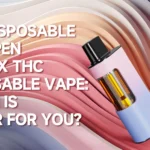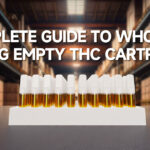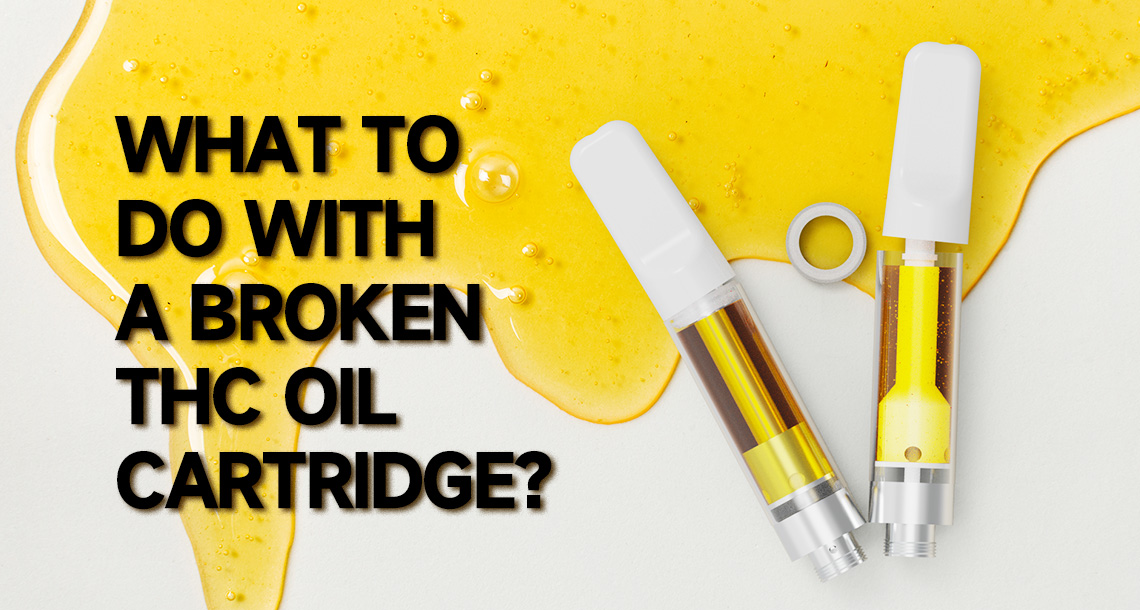
THC Disposable Vape Pen vs. Box THC Disposable Vape: Which Is Better For You?
June 30, 2023
A Complete Guide to Wholesale Buying Empty THC Cartridges
July 7, 2023
THC Disposable Vape Pen vs. Box THC Disposable Vape: Which Is Better For You?
June 30, 2023
A Complete Guide to Wholesale Buying Empty THC Cartridges
July 7, 2023
What to Do with a Broken THC Oil Cartridge: Eco-Friendly Solutions
As the popularity of cannabis consumption continues to rise, THC oil cartridges have become a convenient and discreet option for many enthusiasts. However, like any other product, THC oil cartridges are not immune to breaking or malfunctioning. It can be disheartening to have a broken cartridge, especially considering the value of the remaining oil inside.
In this blog post, we will explore eco-friendly solutions for dealing with broken THC oil cartridges, so you can make the most of your investment while being mindful of the environment.
Assess the Damage
Before exploring various solutions, it’s essential to assess the damage to your broken THC oil cartridge. Identify the specific issue, such as a cracked cartridge, a damaged mouthpiece, or a malfunctioning heating element. Understanding the problem will help you determine the best course of action.
Salvage the Remaining Oil
If your cartridge is broken but still contains usable oil, you can salvage it. Carefully remove the oil from the cartridge using a syringe or a specialized oil extraction tool.
Ensure you handle the oil with care to prevent spills or contamination. Transfer the oil to a new cartridge, a storage container, or another suitable vessel for future use.
Recycle the THC Oil Cartridge
Dispose of broken THC oil cartridges responsibly by recycling them. Many manufacturers and dispensaries have implemented recycling programs to collect used cartridges and properly dispose of them.
Check with your local dispensaries, cannabis retailers, or recycling centers to find out if they accept empty cartridges. Recycling not only prevents cartridges from ending up in landfills but also reduces the need for new materials in the manufacturing process.

Explore Cartridge Refill Options
If only a specific component of your THC oil cartridge is broken, such as the mouthpiece or the heating element, you may be able to replace it.
Some manufacturers offer replacement parts or refillable cartridges, allowing you to extend the lifespan of your cartridge. This option is not only cost-effective but also reduces waste generated from constantly buying new cartridges.
Share or Donate
If you have a broken THC oil cartridge that cannot be salvaged or repurposed, consider sharing it with others who may be able to find alternative uses for it.
Some artists or enthusiasts may appreciate having the cartridge for art projects, experimentation, or repairs. Additionally, local cannabis communities or organizations might accept donations for educational purposes or for individuals who cannot afford new cartridges.
Proper Disposal
If you have exhausted all options for salvaging, recycling or repurposing your broken THC oil cartridge, it’s crucial to dispose of it properly.
Empty cartridges should never be thrown in the regular trash or flushed down the toilet. Improper disposal can contribute to pollution and harm the environment. Check with your local waste management facility or hazardous waste disposal center to inquire about their guidelines for disposing of empty or broken cartridges.
Educate Others
Spread awareness about the importance of responsible THC oil cartridge disposal. Share the knowledge you’ve gained about recycling, upcycling, and other eco-friendly solutions with friends, family, and fellow cannabis enthusiasts.
Encourage them to adopt sustainable practices and minimize waste in their cannabis consumption habits. By educating others, you can have a broader positive impact on the environment.
Spread the Word About Safe Usage
Broken THC oil cartridges can sometimes result from misuse or mishandling. Take the opportunity to educate yourself and others about proper usage and storage techniques to prevent accidents or damage.
By following the manufacturer’s instructions and storing cartridges in a cool, dry place, you can prolong their lifespan and reduce the likelihood of breakage.
Conclusion
Dealing with broken THC oil cartridges doesn’t have to be a frustrating experience. By adopting eco-friendly solutions such as salvaging the oil, recycling, upcycling, or sharing, you can make the most of your cartridges while minimizing waste. Additionally, considering alternative consumption methods, supporting reputable brands, and spreading awareness about responsible usage and disposal can contribute to a more sustainable cannabis culture. Let’s prioritize both our enjoyment and the environment as we navigate the world of THC oil cartridges.
How to save THC oil from a broken cartridge?
If you possess the knowledge and experience, you may consider extracting the remaining oil from the broken THC oil cartridge. However, it is important to note that this process should only be attempted by individuals who are well-versed in cannabis extraction methods. Once the oil is safely extracted, dispose of the cartridge in accordance with local regulations.
- Gather the necessary materials:
A clean and empty syringe with a blunt-tip needle (available at pharmacies or online)
A small glass or silicone container with an airtight lid for storing the oil.
Use protective gloves: When handling a broken THC oil cartridge, wear protective gloves to avoid any direct contact with the oil or broken glass.
A heat source such as a hairdryer or warm water (optional, for easier extraction).
- Prepare a clean workspace
Find a clean and well-lit area to work in. It’s important to maintain cleanliness and avoid any potential contamination during the oil extraction process.
- Warm the cartridge (optional)
If the oil in the cartridge is thick and difficult to extract, you can gently warm it to make the process easier. You can do this by using a hairdryer on low heat to warm the cartridge or by placing it in a container of warm water for a few minutes. Avoid using excessive heat to prevent damaging the cartridge or compromising the oil’s quality.
- Remove the broken cartridge from the battery
Carefully disconnect the broken cartridge from the battery or power source. Be gentle to avoid spillage or further damage to the cartridge.
- Extract the oil using a syringe
Attach the blunt-tip needle to the syringe and insert it into the opening of the broken cartridge where the oil is stored. Slowly and steadily draw back the plunger of the syringe to create suction and pull the oil into the syringe. Take your time and be cautious to avoid spills or leaks.
- Transfer the oil to a storage container
Once you’ve extracted the desired amount of oil, carefully remove the syringe from the broken cartridge. Push the plunger gently to dispense the oil into a clean glass or silicone container with an airtight lid. Choose a container that is suitable for storing oil, ensuring it is clean, dry, and properly sealed to prevent any leaks or exposure to air.
- Store the container in a cool, dark place
To maintain the quality and potency of the THC oil, store the container in a cool, dark place away from direct sunlight, heat, and humidity. Proper storage helps preserve the flavor, aroma, and effectiveness of the oil over time.
- Dispose of the broken cartridge responsibly
Once you have successfully extracted the oil, responsibly dispose of the broken cartridge. As mentioned earlier, check with local recycling centers or dispensaries to see if they have specific recycling programs for THC oil cartridges.
Remember, safety should always be a priority when handling THC oil or any cannabis-related products. Take caution during the extraction process to avoid any accidents or spills.